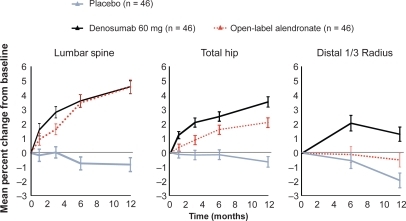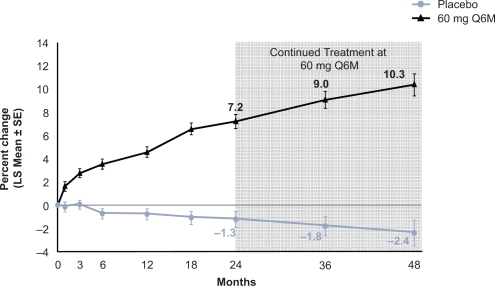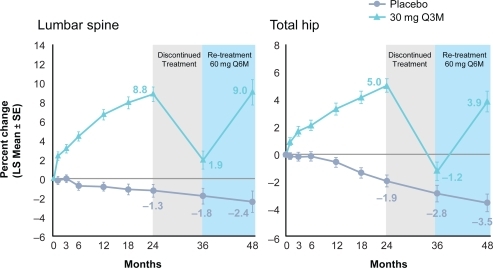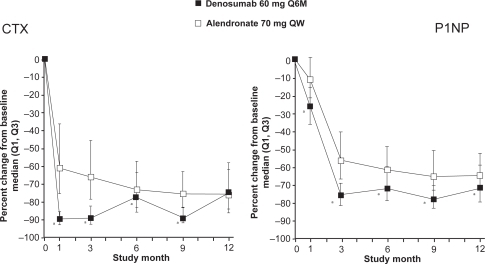Figures & data
Figure 1 Free RANKL (ie, not bound by osteoprotegerin [OPG]) binds to the transmembrane RANK receptor, which upregulates intracellular signal transducers which are involved in cytoskeletal organization, cell motility, growth and survival, and some also bind NF κB. After ubiquitination, signal transducers are released from NF κB and degraded by proteasomes. NF κB can than migrate to the nucleus, were it upregulates transcriptional regulators that start osteoclastogenic gene transcription.Citation2
![Figure 1 Free RANKL (ie, not bound by osteoprotegerin [OPG]) binds to the transmembrane RANK receptor, which upregulates intracellular signal transducers which are involved in cytoskeletal organization, cell motility, growth and survival, and some also bind NF κB. After ubiquitination, signal transducers are released from NF κB and degraded by proteasomes. NF κB can than migrate to the nucleus, were it upregulates transcriptional regulators that start osteoclastogenic gene transcription.Citation2](/cms/asset/784e774c-063e-420c-8719-108292ede48e/dcia_a_3333_f0001_c.jpg)
Figure 2 Phase 2 study of denosumab every 6 months in postmenopausal women with low (bone mineral density) BMD: lumbar spine, total hip, and distal 1/3 radius BMD at 12 months. Adapted from J Bone Miner Res. 2007;22:1832–1841,Citation30 with permission of the American Society for Bone and Mineral Research; and from N Engl J Med. 2006;354:821–831.Citation29

Figure 3 Effect of 4 years of denosumab every 6 months on lumbar spine (LS) bone mineral density. Adapted from J Bone Miner Res. 2007;22:1832–1841,Citation30 with permission of the American Society for Bone and Mineral Research.

Figure 4 Effect of denosumab re-treatment and changes to lumbar spine (LS) and total hip bone mineral density. Reproduced with permission from Miller PD, Bolognese MA, Lewiecki EM, et al. Amg Bone Loss Study Group. Effect of denosumab on bone density and turnover in postmenopausal women with low bone mass after long-term continued, discontinued, and restarting of therapy: a randomized blinded phase 2 clinical trial. Bone. 2008;43(2):222–229.Citation32 Copyright © 2008 Elsevier.

Figure 5 Effect of denusomab vs alendronate head to head trial on bone markers. Reproduced from J Bone Miner Res. 2009;24:153–161,Citation33 with permission of the American Society for Bone and Mineral Research.
